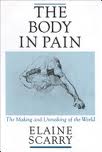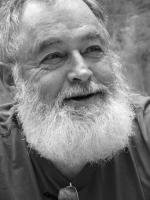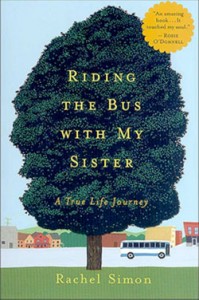I’m reading three books at the same time. My husband doesn’t understand that, but it makes perfect sense to me. Different books for different moods, different levels of energy, different levels of willingness to dig in. I often find that they speak to each other—don’t you, those of you who do that? Not intentionally, but still. Book one is The Body in Pain: The Making and Unmaking of the World, by Elaine Scarry (Oxford U. Press, 1985). I ordered this one (from my local indie bookstore) on someone’s recommendation. It’s weighty and slow and brilliant. The “unmaking” part deals with the structure of torture and of war. The making part deals with the imagination and belief. I’m only partway through, so what I say is partial. Scarry looks at how people are “unmade” by pain. For people in pain, there’s no other reality. If it hurts, it must be real. So this makes pain very useful politically. Invisible pain is converted into a visible fiction of the torturer's own power (torturing instruments, national flag, etc.) . When we go to war, we place before our minds colorful and dramatic images to stand for the actual fact of severed and mutilated bodies. If winning or losing were the issue, we could resolve that with a bout of arm-wrestling. But war is different, involved with symbols, projections. Scarry deconstructs what we think war does in a number of ways, too much for this blog.So why did I bring it up? Because I’m interested in where she goes in the second half. She looks specifically at pain. How can we prove how much pain we have? How can we prove we are in pain? How can we “know” that someone else is in pain? Pain can’t be explained any other way than by using metaphor (“it feels like needles”). Pain involves imagining. There must be an objectification of a felt state. Which is also true of belief. The artifact must stand for the inexpressible.Here’s Scarry: “One final example of the difference between formulating the phenomenon of projection in terms of concrete body parts or instead in terms of more elusive interior attributes is the phenomenon of projection itself. That is, while the human being is a seeing, moving, breathing, hearing, hungering, desiring, working, self-replicating, remembering, blood-pumping creature (who projects all these attributes outward), he is therefore also a projecting creature. . . . . the human being has an outside surface and in inside surface, and creating may be expressed as a reversing of these two bodily linings. There exist both artifacts (e.g. the scriptures) and material artifacts (altar) that objectify the act of believing, imagining, or creating as a sometimes graphically represented turning of the body inside-out.”
Book one is The Body in Pain: The Making and Unmaking of the World, by Elaine Scarry (Oxford U. Press, 1985). I ordered this one (from my local indie bookstore) on someone’s recommendation. It’s weighty and slow and brilliant. The “unmaking” part deals with the structure of torture and of war. The making part deals with the imagination and belief. I’m only partway through, so what I say is partial. Scarry looks at how people are “unmade” by pain. For people in pain, there’s no other reality. If it hurts, it must be real. So this makes pain very useful politically. Invisible pain is converted into a visible fiction of the torturer's own power (torturing instruments, national flag, etc.) . When we go to war, we place before our minds colorful and dramatic images to stand for the actual fact of severed and mutilated bodies. If winning or losing were the issue, we could resolve that with a bout of arm-wrestling. But war is different, involved with symbols, projections. Scarry deconstructs what we think war does in a number of ways, too much for this blog.So why did I bring it up? Because I’m interested in where she goes in the second half. She looks specifically at pain. How can we prove how much pain we have? How can we prove we are in pain? How can we “know” that someone else is in pain? Pain can’t be explained any other way than by using metaphor (“it feels like needles”). Pain involves imagining. There must be an objectification of a felt state. Which is also true of belief. The artifact must stand for the inexpressible.Here’s Scarry: “One final example of the difference between formulating the phenomenon of projection in terms of concrete body parts or instead in terms of more elusive interior attributes is the phenomenon of projection itself. That is, while the human being is a seeing, moving, breathing, hearing, hungering, desiring, working, self-replicating, remembering, blood-pumping creature (who projects all these attributes outward), he is therefore also a projecting creature. . . . . the human being has an outside surface and in inside surface, and creating may be expressed as a reversing of these two bodily linings. There exist both artifacts (e.g. the scriptures) and material artifacts (altar) that objectify the act of believing, imagining, or creating as a sometimes graphically represented turning of the body inside-out.” Scarry’s book has a lot in common with another book I’m reading, the Lankavatara Sutra (Counterpoint Press, 2012, trans. Red Pine [Bill Porter], pictured here), which is also dense and also intended to deconstruct our preconceptions. This book is considered seminal Zen teaching. In a series of conversations, the Buddha instructs his disciple Mahamati on how we project a world outward, how that world of form both is and isn’t true. “The Buddha tells Mahamati, ‘Because the various projections of people’s minds appear before them as objects, they become attached to the existence of their projection.”Ah, are you tired of thinking about this? That, actually, is the point of both books, to wear the reader down, to keep insisting and insisting until our accepted ideas about things are worn threadbare and we have to see with new eyes.The third book, you’ll be happy to know, is an easier read: Rachel Simon’s Riding the Bus with my Sister (Houghton Mifflin, 2002). I’ve read Simon’s newer books, but hadn’t gotten to her first big hit. She’s coming to Traverse City in October, and I wanted to be sure I’d read everything, since I’ll be introducing her. This is a memoir of two sisters: Beth, who has mental retardation and Rachel, the writer who is struggling with her own unwillingness to commit to a steady relationship. Rachel decides to spend a year getting to know her retarded sister better by following along with her as she rides bus after bus all day every day—her obsession. In the meantime, we find out about their childhood, their parents’ divorce, their mother’s unfortunate marriage to an ex-con that results the other children’s being sent away and Beth’s being dragged along on a desperate, nomadic life. Beth, as we begin to see, is a difficult, exuberant, petulant, headstrong, devoted, and utterly complicated person.
Scarry’s book has a lot in common with another book I’m reading, the Lankavatara Sutra (Counterpoint Press, 2012, trans. Red Pine [Bill Porter], pictured here), which is also dense and also intended to deconstruct our preconceptions. This book is considered seminal Zen teaching. In a series of conversations, the Buddha instructs his disciple Mahamati on how we project a world outward, how that world of form both is and isn’t true. “The Buddha tells Mahamati, ‘Because the various projections of people’s minds appear before them as objects, they become attached to the existence of their projection.”Ah, are you tired of thinking about this? That, actually, is the point of both books, to wear the reader down, to keep insisting and insisting until our accepted ideas about things are worn threadbare and we have to see with new eyes.The third book, you’ll be happy to know, is an easier read: Rachel Simon’s Riding the Bus with my Sister (Houghton Mifflin, 2002). I’ve read Simon’s newer books, but hadn’t gotten to her first big hit. She’s coming to Traverse City in October, and I wanted to be sure I’d read everything, since I’ll be introducing her. This is a memoir of two sisters: Beth, who has mental retardation and Rachel, the writer who is struggling with her own unwillingness to commit to a steady relationship. Rachel decides to spend a year getting to know her retarded sister better by following along with her as she rides bus after bus all day every day—her obsession. In the meantime, we find out about their childhood, their parents’ divorce, their mother’s unfortunate marriage to an ex-con that results the other children’s being sent away and Beth’s being dragged along on a desperate, nomadic life. Beth, as we begin to see, is a difficult, exuberant, petulant, headstrong, devoted, and utterly complicated person. What does memoir do but deconstruct our preconceptions? Here is a life. Here are lives. They are not what they might appear. Things are not as they appear. I wonder, and this just occurred to me, if we read memoir so that we will have to see through the fantasies we’ve constructed to something more real.Of course memoirs are constructed lives. Every time we open our mouths, we’re constructing. But to listen to someone trying honestly to say what her life has been, and is, trying to see it clearly, cracks loose some of our fantasies about how that life might be. Do you know E.A. Robinson’s poem, “Richard Corey”? Everyone thought Corey was so grand, but he went home and put a bullet through his head. We get lost in our fantasies. We don’t see the truth. I think as we get older—and this is just me, making a guess at things—we either get more and more lost in our projections or we move closer and closer to truth.
What does memoir do but deconstruct our preconceptions? Here is a life. Here are lives. They are not what they might appear. Things are not as they appear. I wonder, and this just occurred to me, if we read memoir so that we will have to see through the fantasies we’ve constructed to something more real.Of course memoirs are constructed lives. Every time we open our mouths, we’re constructing. But to listen to someone trying honestly to say what her life has been, and is, trying to see it clearly, cracks loose some of our fantasies about how that life might be. Do you know E.A. Robinson’s poem, “Richard Corey”? Everyone thought Corey was so grand, but he went home and put a bullet through his head. We get lost in our fantasies. We don’t see the truth. I think as we get older—and this is just me, making a guess at things—we either get more and more lost in our projections or we move closer and closer to truth.
What I'm Reading
in Archive
